-
EXECUTIVE SUMMARY
-
Market Overview
-
Key Findings
-
Market Segmentation
-
Competitive Landscape
-
Challenges and Opportunities
-
Future Outlook
-
MARKET INTRODUCTION
-
Definition
-
Scope of the study
-
Research Objective
-
Assumption
-
Limitations
-
RESEARCH METHODOLOGY
-
Overview
-
Data Mining
-
Secondary Research
-
Primary Research
-
Primary Interviews and Information Gathering Process
-
Breakdown of Primary Respondents
-
Forecasting Model
-
Market Size Estimation
-
Bottom-Up Approach
-
Top-Down Approach
-
Data Triangulation
-
Validation
-
MARKET DYNAMICS
-
Overview
-
Drivers
-
Restraints
-
Opportunities
-
MARKET FACTOR ANALYSIS
-
Value chain Analysis
-
Porter's Five Forces Analysis
-
Bargaining Power of Suppliers
-
Bargaining Power of Buyers
-
Threat of New Entrants
-
Threat of Substitutes
-
Intensity of Rivalry
-
COVID-19 Impact Analysis
-
Market Impact Analysis
-
Regional Impact
-
Opportunity and Threat Analysis
-
Biodegradable Plastic Packaging Market, BY Type of Biodegradable Plastic (USD Billion)
-
PLA
-
PHA
-
Starch-based
-
Cellulose-based
-
Biodegradable Plastic Packaging Market, BY Application (USD Billion)
-
Food Packaging
-
Cosmetic Packaging
-
Electronics Packaging
-
Consumer Goods Packaging
-
Biodegradable Plastic Packaging Market, BY End Use Industry (USD Billion)
-
Food Beverage
-
Pharmaceuticals
-
Personal Care
-
Electronics
-
Biodegradable Plastic Packaging Market, BY Form (USD Billion)
-
Films
-
Containers
-
Pouches
-
Trays
-
Biodegradable Plastic Packaging Market, BY Regional (USD Billion)
-
North America
-
US
-
Canada
-
Europe
-
Germany
-
UK
-
France
-
Russia
-
Italy
-
Spain
-
Rest of Europe
-
APAC
-
China
-
India
-
Japan
-
South Korea
-
Malaysia
-
Thailand
-
Indonesia
-
Rest of APAC
-
South America
-
Brazil
-
Mexico
-
Argentina
-
Rest of South America
-
MEA
-
GCC Countries
-
South Africa
-
Rest of MEA
-
Competitive Landscape
-
Overview
-
Competitive Analysis
-
Market share Analysis
-
Major Growth Strategy in the Biodegradable Plastic Packaging Market
-
Competitive Benchmarking
-
Leading Players in Terms of Number of Developments in the Biodegradable Plastic Packaging Market
-
Key developments and growth strategies
-
New Product Launch/Service Deployment
-
Merger Acquisitions
-
Joint Ventures
-
Major Players Financial Matrix
-
Sales and Operating Income
-
Major Players RD Expenditure. 2023
-
Company Profiles
-
Novamont
-
Financial Overview
-
Products Offered
-
Key Developments
-
SWOT Analysis
-
Key Strategies
-
Mitsubishi Chemical
-
Financial Overview
-
Products Offered
-
Key Developments
-
SWOT Analysis
-
Key Strategies
-
TIPA
-
Financial Overview
-
Products Offered
-
Key Developments
-
SWOT Analysis
-
Key Strategies
-
Green Dot Bioplastics
-
Financial Overview
-
Products Offered
-
Key Developments
-
SWOT Analysis
-
Key Strategies
-
NatureWorks
-
Financial Overview
-
Products Offered
-
Key Developments
-
SWOT Analysis
-
Key Strategies
-
Danimer Scientific
-
Financial Overview
-
Products Offered
-
Key Developments
-
SWOT Analysis
-
Key Strategies
-
PKN Orlen
-
Financial Overview
-
Products Offered
-
Key Developments
-
SWOT Analysis
-
Key Strategies
-
Total Corbion
-
Financial Overview
-
Products Offered
-
Key Developments
-
SWOT Analysis
-
Key Strategies
-
Earthpack
-
Financial Overview
-
Products Offered
-
Key Developments
-
SWOT Analysis
-
Key Strategies
-
Vega Biofuels
-
Financial Overview
-
Products Offered
-
Key Developments
-
SWOT Analysis
-
Key Strategies
-
Cardia Bioplastics
-
Financial Overview
-
Products Offered
-
Key Developments
-
SWOT Analysis
-
Key Strategies
-
Bioware
-
Financial Overview
-
Products Offered
-
Key Developments
-
SWOT Analysis
-
Key Strategies
-
BASF
-
Financial Overview
-
Products Offered
-
Key Developments
-
SWOT Analysis
-
Key Strategies
-
Futerro
-
Financial Overview
-
Products Offered
-
Key Developments
-
SWOT Analysis
-
Key Strategies
-
Bioplastics Solutions
-
Financial Overview
-
Products Offered
-
Key Developments
-
SWOT Analysis
-
Key Strategies
-
Appendix
-
References
-
Related Reports
-
LIST Of tables
-
LIST OF ASSUMPTIONS
-
North America Biodegradable Plastic Packaging Market SIZE ESTIMATES & FORECAST, BY TYPE OF BIODEGRADABLE PLASTIC, 2019-2035 (USD Billions)
-
North America Biodegradable Plastic Packaging Market SIZE ESTIMATES & FORECAST, BY APPLICATION, 2019-2035 (USD Billions)
-
North America Biodegradable Plastic Packaging Market SIZE ESTIMATES & FORECAST, BY END USE INDUSTRY, 2019-2035 (USD Billions)
-
North America Biodegradable Plastic Packaging Market SIZE ESTIMATES & FORECAST, BY FORM, 2019-2035 (USD Billions)
-
North America Biodegradable Plastic Packaging Market SIZE ESTIMATES & FORECAST, BY REGIONAL, 2019-2035 (USD Billions)
-
US Biodegradable Plastic Packaging Market SIZE ESTIMATES & FORECAST, BY TYPE OF BIODEGRADABLE PLASTIC, 2019-2035 (USD Billions)
-
US Biodegradable Plastic Packaging Market SIZE ESTIMATES & FORECAST, BY APPLICATION, 2019-2035 (USD Billions)
-
US Biodegradable Plastic Packaging Market SIZE ESTIMATES & FORECAST, BY END USE INDUSTRY, 2019-2035 (USD Billions)
-
US Biodegradable Plastic Packaging Market SIZE ESTIMATES & FORECAST, BY FORM, 2019-2035 (USD Billions)
-
US Biodegradable Plastic Packaging Market SIZE ESTIMATES & FORECAST, BY REGIONAL, 2019-2035 (USD Billions)
-
Canada Biodegradable Plastic Packaging Market SIZE ESTIMATES & FORECAST, BY TYPE OF BIODEGRADABLE PLASTIC, 2019-2035 (USD Billions)
-
Canada Biodegradable Plastic Packaging Market SIZE ESTIMATES & FORECAST, BY APPLICATION, 2019-2035 (USD Billions)
-
Canada Biodegradable Plastic Packaging Market SIZE ESTIMATES & FORECAST, BY END USE INDUSTRY, 2019-2035 (USD Billions)
-
Canada Biodegradable Plastic Packaging Market SIZE ESTIMATES & FORECAST, BY FORM, 2019-2035 (USD Billions)
-
Canada Biodegradable Plastic Packaging Market SIZE ESTIMATES & FORECAST, BY REGIONAL, 2019-2035 (USD Billions)
-
Europe Biodegradable Plastic Packaging Market SIZE ESTIMATES & FORECAST, BY TYPE OF BIODEGRADABLE PLASTIC, 2019-2035 (USD Billions)
-
Europe Biodegradable Plastic Packaging Market SIZE ESTIMATES & FORECAST, BY APPLICATION, 2019-2035 (USD Billions)
-
Europe Biodegradable Plastic Packaging Market SIZE ESTIMATES & FORECAST, BY END USE INDUSTRY, 2019-2035 (USD Billions)
-
Europe Biodegradable Plastic Packaging Market SIZE ESTIMATES & FORECAST, BY FORM, 2019-2035 (USD Billions)
-
Europe Biodegradable Plastic Packaging Market SIZE ESTIMATES & FORECAST, BY REGIONAL, 2019-2035 (USD Billions)
-
Germany Biodegradable Plastic Packaging Market SIZE ESTIMATES & FORECAST, BY TYPE OF BIODEGRADABLE PLASTIC, 2019-2035 (USD Billions)
-
Germany Biodegradable Plastic Packaging Market SIZE ESTIMATES & FORECAST, BY APPLICATION, 2019-2035 (USD Billions)
-
Germany Biodegradable Plastic Packaging Market SIZE ESTIMATES & FORECAST, BY END USE INDUSTRY, 2019-2035 (USD Billions)
-
Germany Biodegradable Plastic Packaging Market SIZE ESTIMATES & FORECAST, BY FORM, 2019-2035 (USD Billions)
-
Germany Biodegradable Plastic Packaging Market SIZE ESTIMATES & FORECAST, BY REGIONAL, 2019-2035 (USD Billions)
-
UK Biodegradable Plastic Packaging Market SIZE ESTIMATES & FORECAST, BY TYPE OF BIODEGRADABLE PLASTIC, 2019-2035 (USD Billions)
-
UK Biodegradable Plastic Packaging Market SIZE ESTIMATES & FORECAST, BY APPLICATION, 2019-2035 (USD Billions)
-
UK Biodegradable Plastic Packaging Market SIZE ESTIMATES & FORECAST, BY END USE INDUSTRY, 2019-2035 (USD Billions)
-
UK Biodegradable Plastic Packaging Market SIZE ESTIMATES & FORECAST, BY FORM, 2019-2035 (USD Billions)
-
UK Biodegradable Plastic Packaging Market SIZE ESTIMATES & FORECAST, BY REGIONAL, 2019-2035 (USD Billions)
-
France Biodegradable Plastic Packaging Market SIZE ESTIMATES & FORECAST, BY TYPE OF BIODEGRADABLE PLASTIC, 2019-2035 (USD Billions)
-
France Biodegradable Plastic Packaging Market SIZE ESTIMATES & FORECAST, BY APPLICATION, 2019-2035 (USD Billions)
-
France Biodegradable Plastic Packaging Market SIZE ESTIMATES & FORECAST, BY END USE INDUSTRY, 2019-2035 (USD Billions)
-
France Biodegradable Plastic Packaging Market SIZE ESTIMATES & FORECAST, BY FORM, 2019-2035 (USD Billions)
-
France Biodegradable Plastic Packaging Market SIZE ESTIMATES & FORECAST, BY REGIONAL, 2019-2035 (USD Billions)
-
Russia Biodegradable Plastic Packaging Market SIZE ESTIMATES & FORECAST, BY TYPE OF BIODEGRADABLE PLASTIC, 2019-2035 (USD Billions)
-
Russia Biodegradable Plastic Packaging Market SIZE ESTIMATES & FORECAST, BY APPLICATION, 2019-2035 (USD Billions)
-
Russia Biodegradable Plastic Packaging Market SIZE ESTIMATES & FORECAST, BY END USE INDUSTRY, 2019-2035 (USD Billions)
-
Russia Biodegradable Plastic Packaging Market SIZE ESTIMATES & FORECAST, BY FORM, 2019-2035 (USD Billions)
-
Russia Biodegradable Plastic Packaging Market SIZE ESTIMATES & FORECAST, BY REGIONAL, 2019-2035 (USD Billions)
-
Italy Biodegradable Plastic Packaging Market SIZE ESTIMATES & FORECAST, BY TYPE OF BIODEGRADABLE PLASTIC, 2019-2035 (USD Billions)
-
Italy Biodegradable Plastic Packaging Market SIZE ESTIMATES & FORECAST, BY APPLICATION, 2019-2035 (USD Billions)
-
Italy Biodegradable Plastic Packaging Market SIZE ESTIMATES & FORECAST, BY END USE INDUSTRY, 2019-2035 (USD Billions)
-
Italy Biodegradable Plastic Packaging Market SIZE ESTIMATES & FORECAST, BY FORM, 2019-2035 (USD Billions)
-
Italy Biodegradable Plastic Packaging Market SIZE ESTIMATES & FORECAST, BY REGIONAL, 2019-2035 (USD Billions)
-
Spain Biodegradable Plastic Packaging Market SIZE ESTIMATES & FORECAST, BY TYPE OF BIODEGRADABLE PLASTIC, 2019-2035 (USD Billions)
-
Spain Biodegradable Plastic Packaging Market SIZE ESTIMATES & FORECAST, BY APPLICATION, 2019-2035 (USD Billions)
-
Spain Biodegradable Plastic Packaging Market SIZE ESTIMATES & FORECAST, BY END USE INDUSTRY, 2019-2035 (USD Billions)
-
Spain Biodegradable Plastic Packaging Market SIZE ESTIMATES & FORECAST, BY FORM, 2019-2035 (USD Billions)
-
Spain Biodegradable Plastic Packaging Market SIZE ESTIMATES & FORECAST, BY REGIONAL, 2019-2035 (USD Billions)
-
Rest of Europe Biodegradable Plastic Packaging Market SIZE ESTIMATES & FORECAST, BY TYPE OF BIODEGRADABLE PLASTIC, 2019-2035 (USD Billions)
-
Rest of Europe Biodegradable Plastic Packaging Market SIZE ESTIMATES & FORECAST, BY APPLICATION, 2019-2035 (USD Billions)
-
Rest of Europe Biodegradable Plastic Packaging Market SIZE ESTIMATES & FORECAST, BY END USE INDUSTRY, 2019-2035 (USD Billions)
-
Rest of Europe Biodegradable Plastic Packaging Market SIZE ESTIMATES & FORECAST, BY FORM, 2019-2035 (USD Billions)
-
Rest of Europe Biodegradable Plastic Packaging Market SIZE ESTIMATES & FORECAST, BY REGIONAL, 2019-2035 (USD Billions)
-
APAC Biodegradable Plastic Packaging Market SIZE ESTIMATES & FORECAST, BY TYPE OF BIODEGRADABLE PLASTIC, 2019-2035 (USD Billions)
-
APAC Biodegradable Plastic Packaging Market SIZE ESTIMATES & FORECAST, BY APPLICATION, 2019-2035 (USD Billions)
-
APAC Biodegradable Plastic Packaging Market SIZE ESTIMATES & FORECAST, BY END USE INDUSTRY, 2019-2035 (USD Billions)
-
APAC Biodegradable Plastic Packaging Market SIZE ESTIMATES & FORECAST, BY FORM, 2019-2035 (USD Billions)
-
APAC Biodegradable Plastic Packaging Market SIZE ESTIMATES & FORECAST, BY REGIONAL, 2019-2035 (USD Billions)
-
China Biodegradable Plastic Packaging Market SIZE ESTIMATES & FORECAST, BY TYPE OF BIODEGRADABLE PLASTIC, 2019-2035 (USD Billions)
-
China Biodegradable Plastic Packaging Market SIZE ESTIMATES & FORECAST, BY APPLICATION, 2019-2035 (USD Billions)
-
China Biodegradable Plastic Packaging Market SIZE ESTIMATES & FORECAST, BY END USE INDUSTRY, 2019-2035 (USD Billions)
-
China Biodegradable Plastic Packaging Market SIZE ESTIMATES & FORECAST, BY FORM, 2019-2035 (USD Billions)
-
China Biodegradable Plastic Packaging Market SIZE ESTIMATES & FORECAST, BY REGIONAL, 2019-2035 (USD Billions)
-
India Biodegradable Plastic Packaging Market SIZE ESTIMATES & FORECAST, BY TYPE OF BIODEGRADABLE PLASTIC, 2019-2035 (USD Billions)
-
India Biodegradable Plastic Packaging Market SIZE ESTIMATES & FORECAST, BY APPLICATION, 2019-2035 (USD Billions)
-
India Biodegradable Plastic Packaging Market SIZE ESTIMATES & FORECAST, BY END USE INDUSTRY, 2019-2035 (USD Billions)
-
India Biodegradable Plastic Packaging Market SIZE ESTIMATES & FORECAST, BY FORM, 2019-2035 (USD Billions)
-
India Biodegradable Plastic Packaging Market SIZE ESTIMATES & FORECAST, BY REGIONAL, 2019-2035 (USD Billions)
-
Japan Biodegradable Plastic Packaging Market SIZE ESTIMATES & FORECAST, BY TYPE OF BIODEGRADABLE PLASTIC, 2019-2035 (USD Billions)
-
Japan Biodegradable Plastic Packaging Market SIZE ESTIMATES & FORECAST, BY APPLICATION, 2019-2035 (USD Billions)
-
Japan Biodegradable Plastic Packaging Market SIZE ESTIMATES & FORECAST, BY END USE INDUSTRY, 2019-2035 (USD Billions)
-
Japan Biodegradable Plastic Packaging Market SIZE ESTIMATES & FORECAST, BY FORM, 2019-2035 (USD Billions)
-
Japan Biodegradable Plastic Packaging Market SIZE ESTIMATES & FORECAST, BY REGIONAL, 2019-2035 (USD Billions)
-
South Korea Biodegradable Plastic Packaging Market SIZE ESTIMATES & FORECAST, BY TYPE OF BIODEGRADABLE PLASTIC, 2019-2035 (USD Billions)
-
South Korea Biodegradable Plastic Packaging Market SIZE ESTIMATES & FORECAST, BY APPLICATION, 2019-2035 (USD Billions)
-
South Korea Biodegradable Plastic Packaging Market SIZE ESTIMATES & FORECAST, BY END USE INDUSTRY, 2019-2035 (USD Billions)
-
South Korea Biodegradable Plastic Packaging Market SIZE ESTIMATES & FORECAST, BY FORM, 2019-2035 (USD Billions)
-
South Korea Biodegradable Plastic Packaging Market SIZE ESTIMATES & FORECAST, BY REGIONAL, 2019-2035 (USD Billions)
-
Malaysia Biodegradable Plastic Packaging Market SIZE ESTIMATES & FORECAST, BY TYPE OF BIODEGRADABLE PLASTIC, 2019-2035 (USD Billions)
-
Malaysia Biodegradable Plastic Packaging Market SIZE ESTIMATES & FORECAST, BY APPLICATION, 2019-2035 (USD Billions)
-
Malaysia Biodegradable Plastic Packaging Market SIZE ESTIMATES & FORECAST, BY END USE INDUSTRY, 2019-2035 (USD Billions)
-
Malaysia Biodegradable Plastic Packaging Market SIZE ESTIMATES & FORECAST, BY FORM, 2019-2035 (USD Billions)
-
Malaysia Biodegradable Plastic Packaging Market SIZE ESTIMATES & FORECAST, BY REGIONAL, 2019-2035 (USD Billions)
-
Thailand Biodegradable Plastic Packaging Market SIZE ESTIMATES & FORECAST, BY TYPE OF BIODEGRADABLE PLASTIC, 2019-2035 (USD Billions)
-
Thailand Biodegradable Plastic Packaging Market SIZE ESTIMATES & FORECAST, BY APPLICATION, 2019-2035 (USD Billions)
-
Thailand Biodegradable Plastic Packaging Market SIZE ESTIMATES & FORECAST, BY END USE INDUSTRY, 2019-2035 (USD Billions)
-
Thailand Biodegradable Plastic Packaging Market SIZE ESTIMATES & FORECAST, BY FORM, 2019-2035 (USD Billions)
-
Thailand Biodegradable Plastic Packaging Market SIZE ESTIMATES & FORECAST, BY REGIONAL, 2019-2035 (USD Billions)
-
Indonesia Biodegradable Plastic Packaging Market SIZE ESTIMATES & FORECAST, BY TYPE OF BIODEGRADABLE PLASTIC, 2019-2035 (USD Billions)
-
Indonesia Biodegradable Plastic Packaging Market SIZE ESTIMATES & FORECAST, BY APPLICATION, 2019-2035 (USD Billions)
-
Indonesia Biodegradable Plastic Packaging Market SIZE ESTIMATES & FORECAST, BY END USE INDUSTRY, 2019-2035 (USD Billions)
-
Indonesia Biodegradable Plastic Packaging Market SIZE ESTIMATES & FORECAST, BY FORM, 2019-2035 (USD Billions)
-
Indonesia Biodegradable Plastic Packaging Market SIZE ESTIMATES & FORECAST, BY REGIONAL, 2019-2035 (USD Billions)
-
Rest of APAC Biodegradable Plastic Packaging Market SIZE ESTIMATES & FORECAST, BY TYPE OF BIODEGRADABLE PLASTIC, 2019-2035 (USD Billions)
-
Rest of APAC Biodegradable Plastic Packaging Market SIZE ESTIMATES & FORECAST, BY APPLICATION, 2019-2035 (USD Billions)
-
Rest of APAC Biodegradable Plastic Packaging Market SIZE ESTIMATES & FORECAST, BY END USE INDUSTRY, 2019-2035 (USD Billions)
-
Rest of APAC Biodegradable Plastic Packaging Market SIZE ESTIMATES & FORECAST, BY FORM, 2019-2035 (USD Billions)
-
Rest of APAC Biodegradable Plastic Packaging Market SIZE ESTIMATES & FORECAST, BY REGIONAL, 2019-2035 (USD Billions)
-
South America Biodegradable Plastic Packaging Market SIZE ESTIMATES & FORECAST, BY TYPE OF BIODEGRADABLE PLASTIC, 2019-2035 (USD Billions)
-
South America Biodegradable Plastic Packaging Market SIZE ESTIMATES & FORECAST, BY APPLICATION, 2019-2035 (USD Billions)
-
South America Biodegradable Plastic Packaging Market SIZE ESTIMATES & FORECAST, BY END USE INDUSTRY, 2019-2035 (USD Billions)
-
South America Biodegradable Plastic Packaging Market SIZE ESTIMATES & FORECAST, BY FORM, 2019-2035 (USD Billions)
-
South America Biodegradable Plastic Packaging Market SIZE ESTIMATES & FORECAST, BY REGIONAL, 2019-2035 (USD Billions)
-
Brazil Biodegradable Plastic Packaging Market SIZE ESTIMATES & FORECAST, BY TYPE OF BIODEGRADABLE PLASTIC, 2019-2035 (USD Billions)
-
Brazil Biodegradable Plastic Packaging Market SIZE ESTIMATES & FORECAST, BY APPLICATION, 2019-2035 (USD Billions)
-
Brazil Biodegradable Plastic Packaging Market SIZE ESTIMATES & FORECAST, BY END USE INDUSTRY, 2019-2035 (USD Billions)
-
Brazil Biodegradable Plastic Packaging Market SIZE ESTIMATES & FORECAST, BY FORM, 2019-2035 (USD Billions)
-
Brazil Biodegradable Plastic Packaging Market SIZE ESTIMATES & FORECAST, BY REGIONAL, 2019-2035 (USD Billions)
-
Mexico Biodegradable Plastic Packaging Market SIZE ESTIMATES & FORECAST, BY TYPE OF BIODEGRADABLE PLASTIC, 2019-2035 (USD Billions)
-
Mexico Biodegradable Plastic Packaging Market SIZE ESTIMATES & FORECAST, BY APPLICATION, 2019-2035 (USD Billions)
-
Mexico Biodegradable Plastic Packaging Market SIZE ESTIMATES & FORECAST, BY END USE INDUSTRY, 2019-2035 (USD Billions)
-
Mexico Biodegradable Plastic Packaging Market SIZE ESTIMATES & FORECAST, BY FORM, 2019-2035 (USD Billions)
-
Mexico Biodegradable Plastic Packaging Market SIZE ESTIMATES & FORECAST, BY REGIONAL, 2019-2035 (USD Billions)
-
Argentina Biodegradable Plastic Packaging Market SIZE ESTIMATES & FORECAST, BY TYPE OF BIODEGRADABLE PLASTIC, 2019-2035 (USD Billions)
-
Argentina Biodegradable Plastic Packaging Market SIZE ESTIMATES & FORECAST, BY APPLICATION, 2019-2035 (USD Billions)
-
Argentina Biodegradable Plastic Packaging Market SIZE ESTIMATES & FORECAST, BY END USE INDUSTRY, 2019-2035 (USD Billions)
-
Argentina Biodegradable Plastic Packaging Market SIZE ESTIMATES & FORECAST, BY FORM, 2019-2035 (USD Billions)
-
Argentina Biodegradable Plastic Packaging Market SIZE ESTIMATES & FORECAST, BY REGIONAL, 2019-2035 (USD Billions)
-
Rest of South America Biodegradable Plastic Packaging Market SIZE ESTIMATES & FORECAST, BY TYPE OF BIODEGRADABLE PLASTIC, 2019-2035 (USD Billions)
-
Rest of South America Biodegradable Plastic Packaging Market SIZE ESTIMATES & FORECAST, BY APPLICATION, 2019-2035 (USD Billions)
-
Rest of South America Biodegradable Plastic Packaging Market SIZE ESTIMATES & FORECAST, BY END USE INDUSTRY, 2019-2035 (USD Billions)
-
Rest of South America Biodegradable Plastic Packaging Market SIZE ESTIMATES & FORECAST, BY FORM, 2019-2035 (USD Billions)
-
Rest of South America Biodegradable Plastic Packaging Market SIZE ESTIMATES & FORECAST, BY REGIONAL, 2019-2035 (USD Billions)
-
MEA Biodegradable Plastic Packaging Market SIZE ESTIMATES & FORECAST, BY TYPE OF BIODEGRADABLE PLASTIC, 2019-2035 (USD Billions)
-
MEA Biodegradable Plastic Packaging Market SIZE ESTIMATES & FORECAST, BY APPLICATION, 2019-2035 (USD Billions)
-
MEA Biodegradable Plastic Packaging Market SIZE ESTIMATES & FORECAST, BY END USE INDUSTRY, 2019-2035 (USD Billions)
-
MEA Biodegradable Plastic Packaging Market SIZE ESTIMATES & FORECAST, BY FORM, 2019-2035 (USD Billions)
-
MEA Biodegradable Plastic Packaging Market SIZE ESTIMATES & FORECAST, BY REGIONAL, 2019-2035 (USD Billions)
-
GCC Countries Biodegradable Plastic Packaging Market SIZE ESTIMATES & FORECAST, BY TYPE OF BIODEGRADABLE PLASTIC, 2019-2035 (USD Billions)
-
GCC Countries Biodegradable Plastic Packaging Market SIZE ESTIMATES & FORECAST, BY APPLICATION, 2019-2035 (USD Billions)
-
GCC Countries Biodegradable Plastic Packaging Market SIZE ESTIMATES & FORECAST, BY END USE INDUSTRY, 2019-2035 (USD Billions)
-
GCC Countries Biodegradable Plastic Packaging Market SIZE ESTIMATES & FORECAST, BY FORM, 2019-2035 (USD Billions)
-
GCC Countries Biodegradable Plastic Packaging Market SIZE ESTIMATES & FORECAST, BY REGIONAL, 2019-2035 (USD Billions)
-
South Africa Biodegradable Plastic Packaging Market SIZE ESTIMATES & FORECAST, BY TYPE OF BIODEGRADABLE PLASTIC, 2019-2035 (USD Billions)
-
South Africa Biodegradable Plastic Packaging Market SIZE ESTIMATES & FORECAST, BY APPLICATION, 2019-2035 (USD Billions)
-
South Africa Biodegradable Plastic Packaging Market SIZE ESTIMATES & FORECAST, BY END USE INDUSTRY, 2019-2035 (USD Billions)
-
South Africa Biodegradable Plastic Packaging Market SIZE ESTIMATES & FORECAST, BY FORM, 2019-2035 (USD Billions)
-
South Africa Biodegradable Plastic Packaging Market SIZE ESTIMATES & FORECAST, BY REGIONAL, 2019-2035 (USD Billions)
-
Rest of MEA Biodegradable Plastic Packaging Market SIZE ESTIMATES & FORECAST, BY TYPE OF BIODEGRADABLE PLASTIC, 2019-2035 (USD Billions)
-
Rest of MEA Biodegradable Plastic Packaging Market SIZE ESTIMATES & FORECAST, BY APPLICATION, 2019-2035 (USD Billions)
-
Rest of MEA Biodegradable Plastic Packaging Market SIZE ESTIMATES & FORECAST, BY END USE INDUSTRY, 2019-2035 (USD Billions)
-
Rest of MEA Biodegradable Plastic Packaging Market SIZE ESTIMATES & FORECAST, BY FORM, 2019-2035 (USD Billions)
-
Rest of MEA Biodegradable Plastic Packaging Market SIZE ESTIMATES & FORECAST, BY REGIONAL, 2019-2035 (USD Billions)
-
PRODUCT LAUNCH/PRODUCT DEVELOPMENT/APPROVAL
-
ACQUISITION/PARTNERSHIP
-
LIST Of figures
-
MARKET SYNOPSIS
-
NORTH AMERICA BIODEGRADABLE PLASTIC PACKAGING MARKET ANALYSIS
-
US BIODEGRADABLE PLASTIC PACKAGING MARKET ANALYSIS BY TYPE OF BIODEGRADABLE PLASTIC
-
US BIODEGRADABLE PLASTIC PACKAGING MARKET ANALYSIS BY APPLICATION
-
US BIODEGRADABLE PLASTIC PACKAGING MARKET ANALYSIS BY END USE INDUSTRY
-
US BIODEGRADABLE PLASTIC PACKAGING MARKET ANALYSIS BY FORM
-
US BIODEGRADABLE PLASTIC PACKAGING MARKET ANALYSIS BY REGIONAL
-
CANADA BIODEGRADABLE PLASTIC PACKAGING MARKET ANALYSIS BY TYPE OF BIODEGRADABLE PLASTIC
-
CANADA BIODEGRADABLE PLASTIC PACKAGING MARKET ANALYSIS BY APPLICATION
-
CANADA BIODEGRADABLE PLASTIC PACKAGING MARKET ANALYSIS BY END USE INDUSTRY
-
CANADA BIODEGRADABLE PLASTIC PACKAGING MARKET ANALYSIS BY FORM
-
CANADA BIODEGRADABLE PLASTIC PACKAGING MARKET ANALYSIS BY REGIONAL
-
EUROPE BIODEGRADABLE PLASTIC PACKAGING MARKET ANALYSIS
-
GERMANY BIODEGRADABLE PLASTIC PACKAGING MARKET ANALYSIS BY TYPE OF BIODEGRADABLE PLASTIC
-
GERMANY BIODEGRADABLE PLASTIC PACKAGING MARKET ANALYSIS BY APPLICATION
-
GERMANY BIODEGRADABLE PLASTIC PACKAGING MARKET ANALYSIS BY END USE INDUSTRY
-
GERMANY BIODEGRADABLE PLASTIC PACKAGING MARKET ANALYSIS BY FORM
-
GERMANY BIODEGRADABLE PLASTIC PACKAGING MARKET ANALYSIS BY REGIONAL
-
UK BIODEGRADABLE PLASTIC PACKAGING MARKET ANALYSIS BY TYPE OF BIODEGRADABLE PLASTIC
-
UK BIODEGRADABLE PLASTIC PACKAGING MARKET ANALYSIS BY APPLICATION
-
UK BIODEGRADABLE PLASTIC PACKAGING MARKET ANALYSIS BY END USE INDUSTRY
-
UK BIODEGRADABLE PLASTIC PACKAGING MARKET ANALYSIS BY FORM
-
UK BIODEGRADABLE PLASTIC PACKAGING MARKET ANALYSIS BY REGIONAL
-
FRANCE BIODEGRADABLE PLASTIC PACKAGING MARKET ANALYSIS BY TYPE OF BIODEGRADABLE PLASTIC
-
FRANCE BIODEGRADABLE PLASTIC PACKAGING MARKET ANALYSIS BY APPLICATION
-
FRANCE BIODEGRADABLE PLASTIC PACKAGING MARKET ANALYSIS BY END USE INDUSTRY
-
FRANCE BIODEGRADABLE PLASTIC PACKAGING MARKET ANALYSIS BY FORM
-
FRANCE BIODEGRADABLE PLASTIC PACKAGING MARKET ANALYSIS BY REGIONAL
-
RUSSIA BIODEGRADABLE PLASTIC PACKAGING MARKET ANALYSIS BY TYPE OF BIODEGRADABLE PLASTIC
-
RUSSIA BIODEGRADABLE PLASTIC PACKAGING MARKET ANALYSIS BY APPLICATION
-
RUSSIA BIODEGRADABLE PLASTIC PACKAGING MARKET ANALYSIS BY END USE INDUSTRY
-
RUSSIA BIODEGRADABLE PLASTIC PACKAGING MARKET ANALYSIS BY FORM
-
RUSSIA BIODEGRADABLE PLASTIC PACKAGING MARKET ANALYSIS BY REGIONAL
-
ITALY BIODEGRADABLE PLASTIC PACKAGING MARKET ANALYSIS BY TYPE OF BIODEGRADABLE PLASTIC
-
ITALY BIODEGRADABLE PLASTIC PACKAGING MARKET ANALYSIS BY APPLICATION
-
ITALY BIODEGRADABLE PLASTIC PACKAGING MARKET ANALYSIS BY END USE INDUSTRY
-
ITALY BIODEGRADABLE PLASTIC PACKAGING MARKET ANALYSIS BY FORM
-
ITALY BIODEGRADABLE PLASTIC PACKAGING MARKET ANALYSIS BY REGIONAL
-
SPAIN BIODEGRADABLE PLASTIC PACKAGING MARKET ANALYSIS BY TYPE OF BIODEGRADABLE PLASTIC
-
SPAIN BIODEGRADABLE PLASTIC PACKAGING MARKET ANALYSIS BY APPLICATION
-
SPAIN BIODEGRADABLE PLASTIC PACKAGING MARKET ANALYSIS BY END USE INDUSTRY
-
SPAIN BIODEGRADABLE PLASTIC PACKAGING MARKET ANALYSIS BY FORM
-
SPAIN BIODEGRADABLE PLASTIC PACKAGING MARKET ANALYSIS BY REGIONAL
-
REST OF EUROPE BIODEGRADABLE PLASTIC PACKAGING MARKET ANALYSIS BY TYPE OF BIODEGRADABLE PLASTIC
-
REST OF EUROPE BIODEGRADABLE PLASTIC PACKAGING MARKET ANALYSIS BY APPLICATION
-
REST OF EUROPE BIODEGRADABLE PLASTIC PACKAGING MARKET ANALYSIS BY END USE INDUSTRY
-
REST OF EUROPE BIODEGRADABLE PLASTIC PACKAGING MARKET ANALYSIS BY FORM
-
REST OF EUROPE BIODEGRADABLE PLASTIC PACKAGING MARKET ANALYSIS BY REGIONAL
-
APAC BIODEGRADABLE PLASTIC PACKAGING MARKET ANALYSIS
-
CHINA BIODEGRADABLE PLASTIC PACKAGING MARKET ANALYSIS BY TYPE OF BIODEGRADABLE PLASTIC
-
CHINA BIODEGRADABLE PLASTIC PACKAGING MARKET ANALYSIS BY APPLICATION
-
CHINA BIODEGRADABLE PLASTIC PACKAGING MARKET ANALYSIS BY END USE INDUSTRY
-
CHINA BIODEGRADABLE PLASTIC PACKAGING MARKET ANALYSIS BY FORM
-
CHINA BIODEGRADABLE PLASTIC PACKAGING MARKET ANALYSIS BY REGIONAL
-
INDIA BIODEGRADABLE PLASTIC PACKAGING MARKET ANALYSIS BY TYPE OF BIODEGRADABLE PLASTIC
-
INDIA BIODEGRADABLE PLASTIC PACKAGING MARKET ANALYSIS BY APPLICATION
-
INDIA BIODEGRADABLE PLASTIC PACKAGING MARKET ANALYSIS BY END USE INDUSTRY
-
INDIA BIODEGRADABLE PLASTIC PACKAGING MARKET ANALYSIS BY FORM
-
INDIA BIODEGRADABLE PLASTIC PACKAGING MARKET ANALYSIS BY REGIONAL
-
JAPAN BIODEGRADABLE PLASTIC PACKAGING MARKET ANALYSIS BY TYPE OF BIODEGRADABLE PLASTIC
-
JAPAN BIODEGRADABLE PLASTIC PACKAGING MARKET ANALYSIS BY APPLICATION
-
JAPAN BIODEGRADABLE PLASTIC PACKAGING MARKET ANALYSIS BY END USE INDUSTRY
-
JAPAN BIODEGRADABLE PLASTIC PACKAGING MARKET ANALYSIS BY FORM
-
JAPAN BIODEGRADABLE PLASTIC PACKAGING MARKET ANALYSIS BY REGIONAL
-
SOUTH KOREA BIODEGRADABLE PLASTIC PACKAGING MARKET ANALYSIS BY TYPE OF BIODEGRADABLE PLASTIC
-
SOUTH KOREA BIODEGRADABLE PLASTIC PACKAGING MARKET ANALYSIS BY APPLICATION
-
SOUTH KOREA BIODEGRADABLE PLASTIC PACKAGING MARKET ANALYSIS BY END USE INDUSTRY
-
SOUTH KOREA BIODEGRADABLE PLASTIC PACKAGING MARKET ANALYSIS BY FORM
-
SOUTH KOREA BIODEGRADABLE PLASTIC PACKAGING MARKET ANALYSIS BY REGIONAL
-
MALAYSIA BIODEGRADABLE PLASTIC PACKAGING MARKET ANALYSIS BY TYPE OF BIODEGRADABLE PLASTIC
-
MALAYSIA BIODEGRADABLE PLASTIC PACKAGING MARKET ANALYSIS BY APPLICATION
-
MALAYSIA BIODEGRADABLE PLASTIC PACKAGING MARKET ANALYSIS BY END USE INDUSTRY
-
MALAYSIA BIODEGRADABLE PLASTIC PACKAGING MARKET ANALYSIS BY FORM
-
MALAYSIA BIODEGRADABLE PLASTIC PACKAGING MARKET ANALYSIS BY REGIONAL
-
THAILAND BIODEGRADABLE PLASTIC PACKAGING MARKET ANALYSIS BY TYPE OF BIODEGRADABLE PLASTIC
-
THAILAND BIODEGRADABLE PLASTIC PACKAGING MARKET ANALYSIS BY APPLICATION
-
THAILAND BIODEGRADABLE PLASTIC PACKAGING MARKET ANALYSIS BY END USE INDUSTRY
-
THAILAND BIODEGRADABLE PLASTIC PACKAGING MARKET ANALYSIS BY FORM
-
THAILAND BIODEGRADABLE PLASTIC PACKAGING MARKET ANALYSIS BY REGIONAL
-
INDONESIA BIODEGRADABLE PLASTIC PACKAGING MARKET ANALYSIS BY TYPE OF BIODEGRADABLE PLASTIC
-
INDONESIA BIODEGRADABLE PLASTIC PACKAGING MARKET ANALYSIS BY APPLICATION
-
INDONESIA BIODEGRADABLE PLASTIC PACKAGING MARKET ANALYSIS BY END USE INDUSTRY
-
INDONESIA BIODEGRADABLE PLASTIC PACKAGING MARKET ANALYSIS BY FORM
-
INDONESIA BIODEGRADABLE PLASTIC PACKAGING MARKET ANALYSIS BY REGIONAL
-
REST OF APAC BIODEGRADABLE PLASTIC PACKAGING MARKET ANALYSIS BY TYPE OF BIODEGRADABLE PLASTIC
-
REST OF APAC BIODEGRADABLE PLASTIC PACKAGING MARKET ANALYSIS BY APPLICATION
-
REST OF APAC BIODEGRADABLE PLASTIC PACKAGING MARKET ANALYSIS BY END USE INDUSTRY
-
REST OF APAC BIODEGRADABLE PLASTIC PACKAGING MARKET ANALYSIS BY FORM
-
REST OF APAC BIODEGRADABLE PLASTIC PACKAGING MARKET ANALYSIS BY REGIONAL
-
SOUTH AMERICA BIODEGRADABLE PLASTIC PACKAGING MARKET ANALYSIS
-
BRAZIL BIODEGRADABLE PLASTIC PACKAGING MARKET ANALYSIS BY TYPE OF BIODEGRADABLE PLASTIC
-
BRAZIL BIODEGRADABLE PLASTIC PACKAGING MARKET ANALYSIS BY APPLICATION
-
BRAZIL BIODEGRADABLE PLASTIC PACKAGING MARKET ANALYSIS BY END USE INDUSTRY
-
BRAZIL BIODEGRADABLE PLASTIC PACKAGING MARKET ANALYSIS BY FORM
-
BRAZIL BIODEGRADABLE PLASTIC PACKAGING MARKET ANALYSIS BY REGIONAL
-
MEXICO BIODEGRADABLE PLASTIC PACKAGING MARKET ANALYSIS BY TYPE OF BIODEGRADABLE PLASTIC
-
MEXICO BIODEGRADABLE PLASTIC PACKAGING MARKET ANALYSIS BY APPLICATION
-
MEXICO BIODEGRADABLE PLASTIC PACKAGING MARKET ANALYSIS BY END USE INDUSTRY
-
MEXICO BIODEGRADABLE PLASTIC PACKAGING MARKET ANALYSIS BY FORM
-
MEXICO BIODEGRADABLE PLASTIC PACKAGING MARKET ANALYSIS BY REGIONAL
-
ARGENTINA BIODEGRADABLE PLASTIC PACKAGING MARKET ANALYSIS BY TYPE OF BIODEGRADABLE PLASTIC
-
ARGENTINA BIODEGRADABLE PLASTIC PACKAGING MARKET ANALYSIS BY APPLICATION
-
ARGENTINA BIODEGRADABLE PLASTIC PACKAGING MARKET ANALYSIS BY END USE INDUSTRY
-
ARGENTINA BIODEGRADABLE PLASTIC PACKAGING MARKET ANALYSIS BY FORM
-
ARGENTINA BIODEGRADABLE PLASTIC PACKAGING MARKET ANALYSIS BY REGIONAL
-
REST OF SOUTH AMERICA BIODEGRADABLE PLASTIC PACKAGING MARKET ANALYSIS BY TYPE OF BIODEGRADABLE PLASTIC
-
REST OF SOUTH AMERICA BIODEGRADABLE PLASTIC PACKAGING MARKET ANALYSIS BY APPLICATION
-
REST OF SOUTH AMERICA BIODEGRADABLE PLASTIC PACKAGING MARKET ANALYSIS BY END USE INDUSTRY
-
REST OF SOUTH AMERICA BIODEGRADABLE PLASTIC PACKAGING MARKET ANALYSIS BY FORM
-
REST OF SOUTH AMERICA BIODEGRADABLE PLASTIC PACKAGING MARKET ANALYSIS BY REGIONAL
-
MEA BIODEGRADABLE PLASTIC PACKAGING MARKET ANALYSIS
-
GCC COUNTRIES BIODEGRADABLE PLASTIC PACKAGING MARKET ANALYSIS BY TYPE OF BIODEGRADABLE PLASTIC
-
GCC COUNTRIES BIODEGRADABLE PLASTIC PACKAGING MARKET ANALYSIS BY APPLICATION
-
GCC COUNTRIES BIODEGRADABLE PLASTIC PACKAGING MARKET ANALYSIS BY END USE INDUSTRY
-
GCC COUNTRIES BIODEGRADABLE PLASTIC PACKAGING MARKET ANALYSIS BY FORM
-
GCC COUNTRIES BIODEGRADABLE PLASTIC PACKAGING MARKET ANALYSIS BY REGIONAL
-
SOUTH AFRICA BIODEGRADABLE PLASTIC PACKAGING MARKET ANALYSIS BY TYPE OF BIODEGRADABLE PLASTIC
-
SOUTH AFRICA BIODEGRADABLE PLASTIC PACKAGING MARKET ANALYSIS BY APPLICATION
-
SOUTH AFRICA BIODEGRADABLE PLASTIC PACKAGING MARKET ANALYSIS BY END USE INDUSTRY
-
SOUTH AFRICA BIODEGRADABLE PLASTIC PACKAGING MARKET ANALYSIS BY FORM
-
SOUTH AFRICA BIODEGRADABLE PLASTIC PACKAGING MARKET ANALYSIS BY REGIONAL
-
REST OF MEA BIODEGRADABLE PLASTIC PACKAGING MARKET ANALYSIS BY TYPE OF BIODEGRADABLE PLASTIC
-
REST OF MEA BIODEGRADABLE PLASTIC PACKAGING MARKET ANALYSIS BY APPLICATION
-
REST OF MEA BIODEGRADABLE PLASTIC PACKAGING MARKET ANALYSIS BY END USE INDUSTRY
-
REST OF MEA BIODEGRADABLE PLASTIC PACKAGING MARKET ANALYSIS BY FORM
-
REST OF MEA BIODEGRADABLE PLASTIC PACKAGING MARKET ANALYSIS BY REGIONAL
-
KEY BUYING CRITERIA OF BIODEGRADABLE PLASTIC PACKAGING MARKET
-
RESEARCH PROCESS OF MRFR
-
DRO ANALYSIS OF BIODEGRADABLE PLASTIC PACKAGING MARKET
-
DRIVERS IMPACT ANALYSIS: BIODEGRADABLE PLASTIC PACKAGING MARKET
-
RESTRAINTS IMPACT ANALYSIS: BIODEGRADABLE PLASTIC PACKAGING MARKET
-
SUPPLY / VALUE CHAIN: BIODEGRADABLE PLASTIC PACKAGING MARKET
-
BIODEGRADABLE PLASTIC PACKAGING MARKET, BY TYPE OF BIODEGRADABLE PLASTIC, 2025 (% SHARE)
-
BIODEGRADABLE PLASTIC PACKAGING MARKET, BY TYPE OF BIODEGRADABLE PLASTIC, 2019 TO 2035 (USD Billions)
-
BIODEGRADABLE PLASTIC PACKAGING MARKET, BY APPLICATION, 2025 (% SHARE)
-
BIODEGRADABLE PLASTIC PACKAGING MARKET, BY APPLICATION, 2019 TO 2035 (USD Billions)
-
BIODEGRADABLE PLASTIC PACKAGING MARKET, BY END USE INDUSTRY, 2025 (% SHARE)
-
BIODEGRADABLE PLASTIC PACKAGING MARKET, BY END USE INDUSTRY, 2019 TO 2035 (USD Billions)
-
BIODEGRADABLE PLASTIC PACKAGING MARKET, BY FORM, 2025 (% SHARE)
-
BIODEGRADABLE PLASTIC PACKAGING MARKET, BY FORM, 2019 TO 2035 (USD Billions)
-
BIODEGRADABLE PLASTIC PACKAGING MARKET, BY REGIONAL, 2025 (% SHARE)
-
BIODEGRADABLE PLASTIC PACKAGING MARKET, BY REGIONAL, 2019 TO 2035 (USD Billions)
-
BENCHMARKING OF MAJOR COMPETITORS

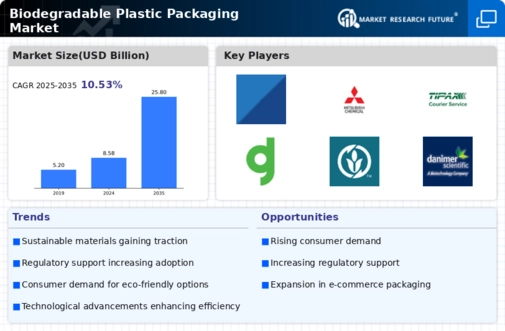

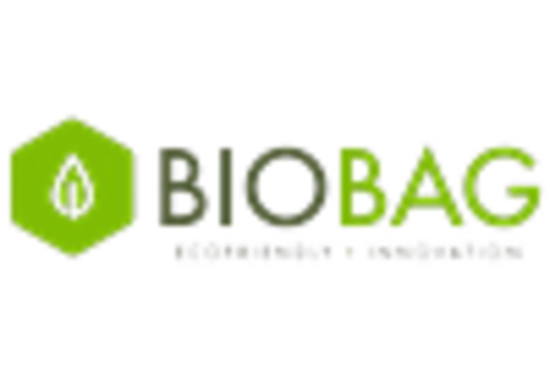

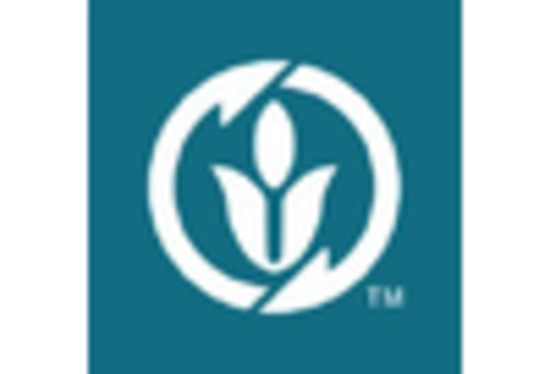
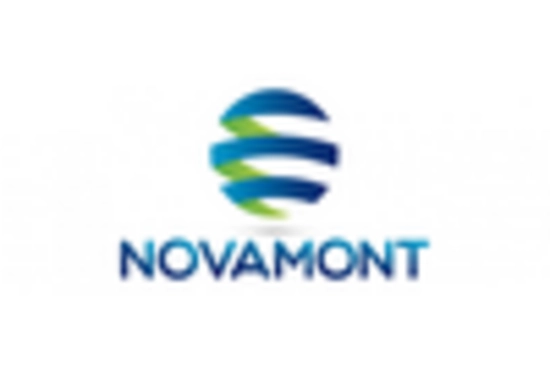
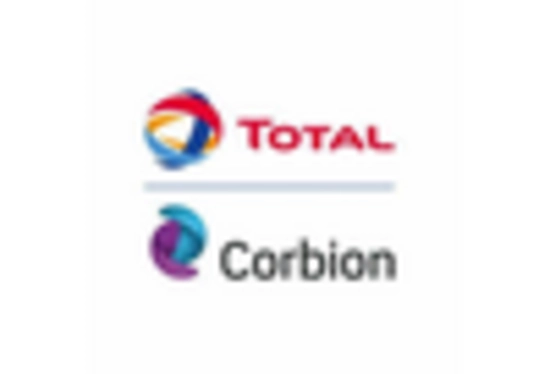

Leave a Comment